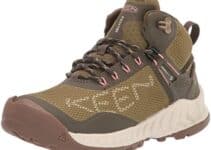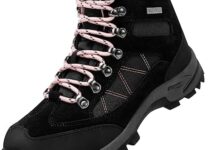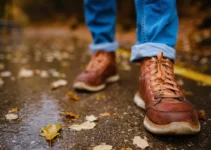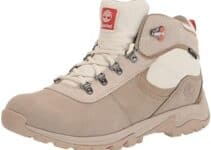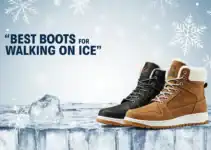This is the brutally honest breakdown you need if you’re looking at minimalist hiking footwear. I’m going to tell you exactly where these shoes shine and where they are an express ticket to an injury, because nobody wants a stress fracture cutting their trip short.
The Allure of “Feeling the Trail” vs. The Pain of a Stone Bruise
You’re probably fed up with those clunky, stiff hiking boots. You see people floating over trails in lightweight footwear, and you’re tempted to ditch the tanks for something that feels natural.
Here’s the reality check: “Minimalist trail running boots” is almost a contradiction in terms. Traditional boots are built with stiff uppers and thick soles—everything minimalism rejects. What you’re really asking about are minimalist trail shoes (or rare minimalist hikers with mid-cut uppers).








The Honest Truth: Minimalist shoes are an incredible tool, but they are absolutely not a magic bullet. If you’re not careful and don’t take the time to transition, they are the fastest way to get a stress fracture or a crippling Achilles injury. This guide is your safety briefing on how to use them wisely.
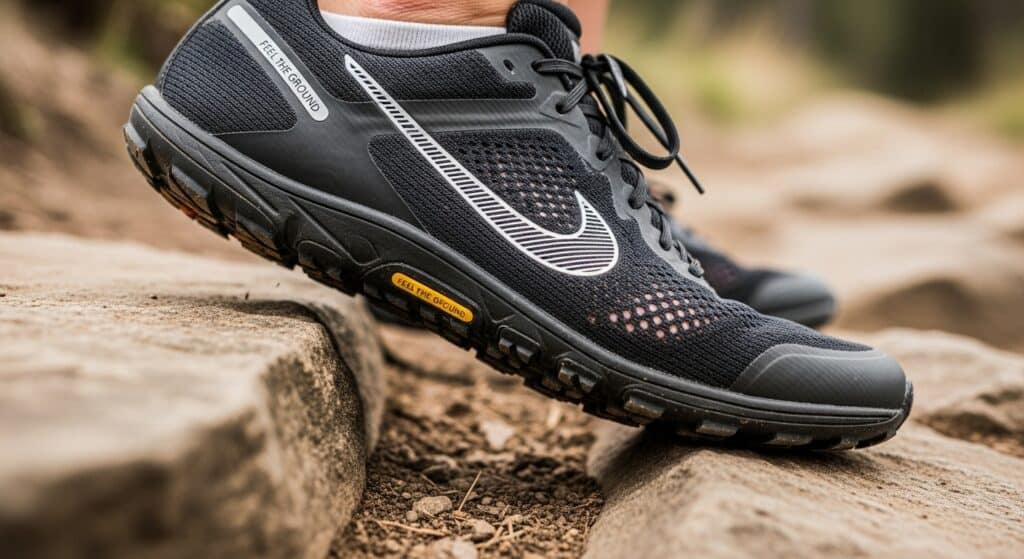
minimalist trail running shoes
The 30-Second Verdict: Are Minimalist Boots a Good Idea for You?
We all love a quick answer. Here’s who should and shouldn’t take the minimalist plunge:
The Minimalist VerdictDetails (Tell It Like It Is)YES, try them IF:You are an experienced minimalist runner/hiker. You want to strengthen your feet on short, easy trails. You are patient and willing to spend 6+ months on a slow transition.NO, avoid them IF:You are a beginner hiker. You are carrying a heavy backpack (over 15 lbs / 7kg). You are planning a long-distance thru-hike. You need a shoe for a 10-mile rocky hike next weekend.
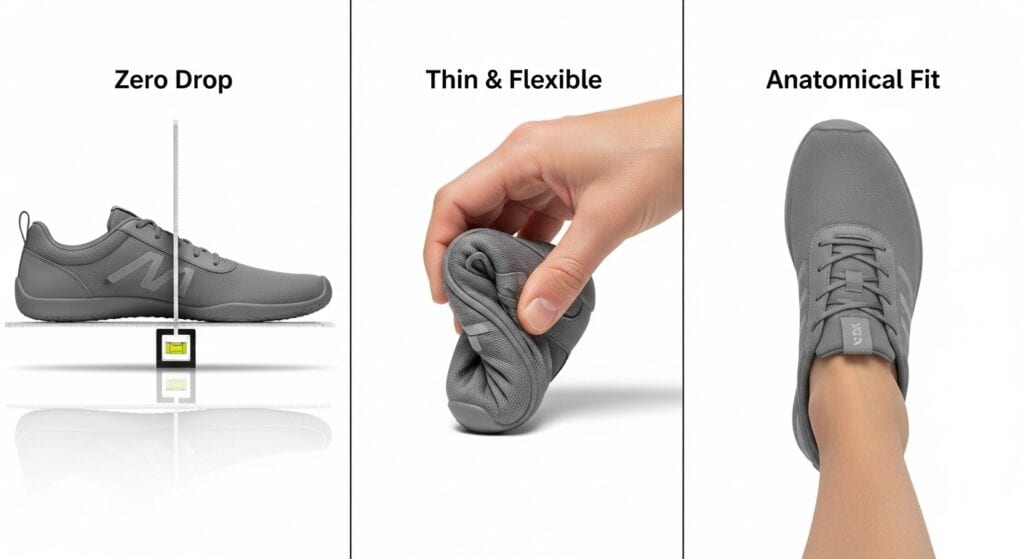
what is a minimalist shoe
What Is a Minimalist Shoe? (The 3 Key Features)
A truly minimalist shoe, sometimes called “barefoot” footwear, must hit three non-negotiable marks:
1. Low or “Zero-Drop” Platform
This is probably the most widely recognized feature. Zero-drop means the heel and the toe are at the exact same height—no height difference, just like standing barefoot. Traditional hiking boots often have a drop of 10-12mm.
- The Benefit: Zero-drop encourages a more natural gait, often promoting a midfoot or forefoot strike instead of a harsh heel strike.
- The Danger (Honesty First): The quickest way to injure yourself is switching suddenly from a high-drop shoe (like 10mm) straight to 0mm. Your Achilles tendon and calf muscles will scream at you. You must transition slowly.
2. Thin, Flexible Sole (High Proprioception)
Minimalist shoes have a thin sole (often 3mm to 10mm) that is highly flexible. This allows your foot to bend and respond to uneven terrain.
- The Benefit: This thinness allows for high proprioception, meaning your foot gets vital feedback from the ground, which helps your brain adjust your balance and stride.
- The Pain: You are supposed to feel the rocks. If you step wrong on a sharp stone, you will experience a unique, agonizing pain known as a “stone bruise”.
What is a Stone Bruise?
A stone bruise is a deep, bone-level contusion on the ball of your foot or heel. It feels like someone jammed a nail into your foot, and the sharp pain lingers for days or even weeks, making walking miserable. You get them by stepping on a sharp, jagged rock with a thin sole at the wrong angle.Prevention: On rocky trails, watch your foot placement obsessively. Shift to cushioned shoes if the terrain is consistently jagged.
3. Wide, Anatomical Toe Box
Minimalist shoes feature a “foot-shaped” or “duck foot” design that is wide at the toes.
- The Benefit: This allows your toes to splay out naturally, providing a wider, more stable base for balance and preventing issues like bunions or cramped toes.
The Promise vs. The Pain: A Brutally Honest Comparison
Let’s be real about the trade-offs. The high-cut minimalist “boot” form factor offers two main things over a low-cut shoe: coverage and weather protection. It does not offer the “ankle support” that traditional boots promise.
The Promise (Pros)The Pain (Cons)Builds Stronger Feet (Over 6+ Months)
Forces intrinsic foot muscles to engage. Studies show improved arch strength and reduced injury rates in experienced minimalist runners.High Injury Risk (If You Rush)
The #1 danger: stress fractures and Achilles tendonitis from doing too much, too soon. Your body needs months to adapt.Lighter Weight, Less Fatigue
Feels like wearing nothing, which reduces leg fatigue over long distances.Zero Protection (Stone Bruises)
You will feel every sharp rock, root, and branch. Ultra-thin soles are best saved for soft ground or forest trails.Natural Gait / Proprioception
You get necessary feedback from the ground, which improves balance and responsiveness.No Real Ankle Support
The flexible high-tops on minimalist boots are for debris/weather coverage, not preventing a sprain.Great for Toes
The wide toe box is incredibly comfortable, allowing natural toe splay.Terrible in Extreme Weather (Often)
Thin soles freeze your feet fast in the cold. Many lack true waterproofing and dry slowly if soaked.
⚠️ WARNING: Minimalist Shoes + Heavy Packs = Disaster
Carrying a 25+ lb backpack in minimalist shoes transfers 100% of that weight directly to your metatarsal bones with zero cushioning. This is how thru-hikers end up quitting the trail with stress fractures by mile 500.Rule: If you’re carrying more than 15 lbs (7kg), use a cushioned shoe. Period.
The Market Reality: Cushioned Zero-Drop vs. True Minimalist
| Model | Drop | Stack Height | Best For | Price Range |
|---|---|---|---|---|
| Altra Lone Peak | 0mm | 25mm | Beginners, long trails | $150-170 |
| Vivobarefoot Tracker | 0mm | 9.5mm | Experienced hikers | $200-250 |
| Xero Scrambler | 0mm | 11.6mm | Balanced approach | $140-160 |
The market for high-top minimalist footwear is split between two major philosophies. You need to know which type you’re actually buying:
Type 1: Cushioned Zero-Drop (The “Gateway” Shoe)

This design gives you the wide toe box and zero-drop benefits, but rejects the thin sole in favor of substantial cushioning. This makes them not minimalist by definition, but an excellent transition tool.
- The Model: Altra Lone Peak 9 WP Mid
- The Specs: 0mm drop, but a huge 25mm stack height.
- The Honest Take: This is the best shoe for beginners or those transitioning from traditional boots. The cushion prevents the painful shock of thin-soled shoes while still allowing your foot and Achilles to adjust to the zero-drop platform and wide toe box. Thru-hikers love the Lone Peak series.
Check Price on Altra Lone Peak →
Type 2: True Minimalist Boots (For the Veteran Hiker)

These boots maintain a thin, flexible sole and are strictly for experienced minimalist hikers. The mid-cut upper provides coverage from brush and weather, but zero functional ankle support.
-
- The Model: Vivobarefoot Tracker Forest ESC
- The Specs: 0mm drop, 9.5mm stack height (with 7mm lugs). Wild hide leather upper, Michelin ESC outsole.
- The Honest Take: This is Vivobarefoot’s rugged option, praised for exceptional grip and durability for hiking. Reviewers state it is too heavy and clunky for running. It’s expensive and water-resistant, not fully waterproof.
Check Price on Vivobarefoot Tracker →

-
- The Model: Xero Scrambler Trail Mid WP
- The Specs: 0mm drop, ~11.6mm stack height, minimal EVA midsole, XeroTex® waterproofing.
- The Honest Take: Xero aims for a balance between pure barefoot feel and all-day comfort, providing just enough padding that sharp rocks won’t hurt. These are designed as lightweight hiking boots, not primarily running shoes.
Check Price on Xero Scrambler →
Practical Value: The Strategic Alternative (Low-Cut Runners + Gaiters)
Given that the “minimalist running boot” is often a functional failure—it’s either too cushioned to be minimal (Altra) or too stiff/heavy to be run in comfortably (Vivo/Xero mid-cuts)—ultralight hikers and minimalist runners have found a superior, modular solution: low-cut trail runners paired with gaiters.
The main reason to consider a mid-cut minimalist boot is to keep out debris (rocks, dirt, sand). Gaiters solve this problem without adding the weight, stiffness, or slow dry time of a mid-cut boot.
Expert Recommendation for Minimalist Runners: If you are a minimalist runner who wants debris protection, use a dedicated low-cut shoe (like the Vivobarefoot Primus Trail FG or Xero Mesa Trail II) and pair it with a lightweight gaiter.
Crucial Gaiter Tip: Since minimalist soles are thin, traditional gaiters with an under-sole strap will ruin the ground-feel and quickly wear out. Opt for strapless solutions (like Dirty Girl Gaiters). This modular system is the gold standard in the ultralight community.
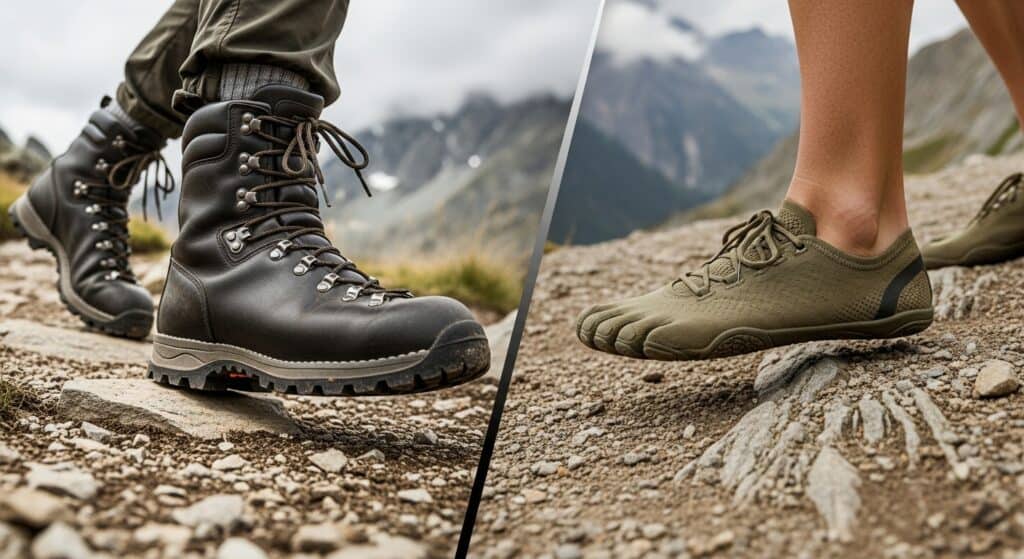
minimalist boots
How to Start Safely (A Guru’s “Don’t Get Hurt” Plan)
If you’re making the switch to any kind of zero-drop or minimalist footwear, this is the most critical advice you can read. This transition is not a sprint; it’s a marathon that should take at least six months.
Phase 1 (Weeks 1-4): Walking Only
- Week 1: 20-30 min walks, 3x/week, on grass or soft trails.
- Week 4: 45-60 min walks, alternate days.
Phase 2 (Weeks 5-12): Introduce Running
- Week 5: Run 5 minutes, then switch to your regular shoes for the rest of your workout.
- Week 12: Build up to running 20 minutes continuously.
Phase 3 (Months 4-6): Build Volume
- Increase your total weekly minimalist mileage by no more than 10% per week.
- By Month 6, you can attempt a 5-mile trail run.
Reality Check: Most people get injured because they skip Phases 1-2 entirely. Don’t be that person.
🚨 STOP IMMEDIATELY If You Feel:
This is critical. You must learn the difference between “good pain” (muscle fatigue) and “bad pain” (tissue damage).
- Sharp, stabbing pain in your Achilles tendon or arch (this is not just soreness).
- Pain that gets worse as you run or persists for more than 48 hours after.
- Tingling, numbness, or “burning” in your toes or forefoot.
These are signs of stress fracture, tendonitis, or nerve compression—not “adaptation pain.” Stop, rest, and see a podiatrist.
Frequently Asked Questions (FAQ)
Will minimalist shoes fix my plantar fasciitis?
Maybe, or they could make it 10x worse. In the long term (1+ year), stronger feet can reduce PF. In the short term, running with no support on an already-inflamed ligament is a recipe for disaster. Talk to a podiatrist first.
What socks should I wear?Thin merino wool or synthetic socks. Avoid thick cushioned socks—they defeat the purpose of ground-feel. For toe shoes like Vibram FiveFingers, you must use Injinjibrand toe socks, or you will get horrible blisters.
Final Takeaway: A Tool, Not a Magic Bullet
Minimalist trail “boots” work wonderfully for hiking and fastpacking if you are trained and accustomed to them. But if you’re a runner, stick to a dedicated low-cut trail runner paired with a gaiter.
For 99% of people, especially those carrying a pack or hiking on rocky terrain, a cushioned zero-drop or a traditional boot is simply safer and will prevent injury. Using a minimalist shoe for a 20-mile hike when you’re not trained for it is like trying to bench press 300 lbs on your first day at the gym. It’s not smart.




